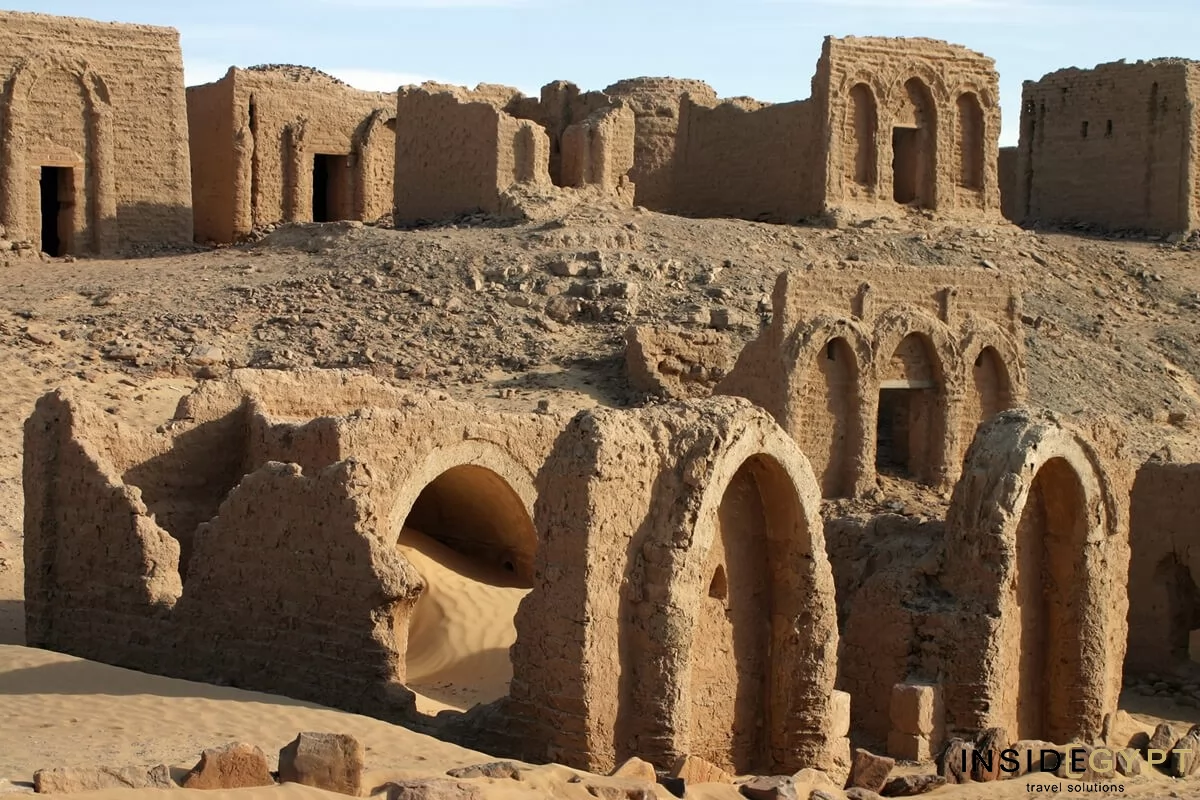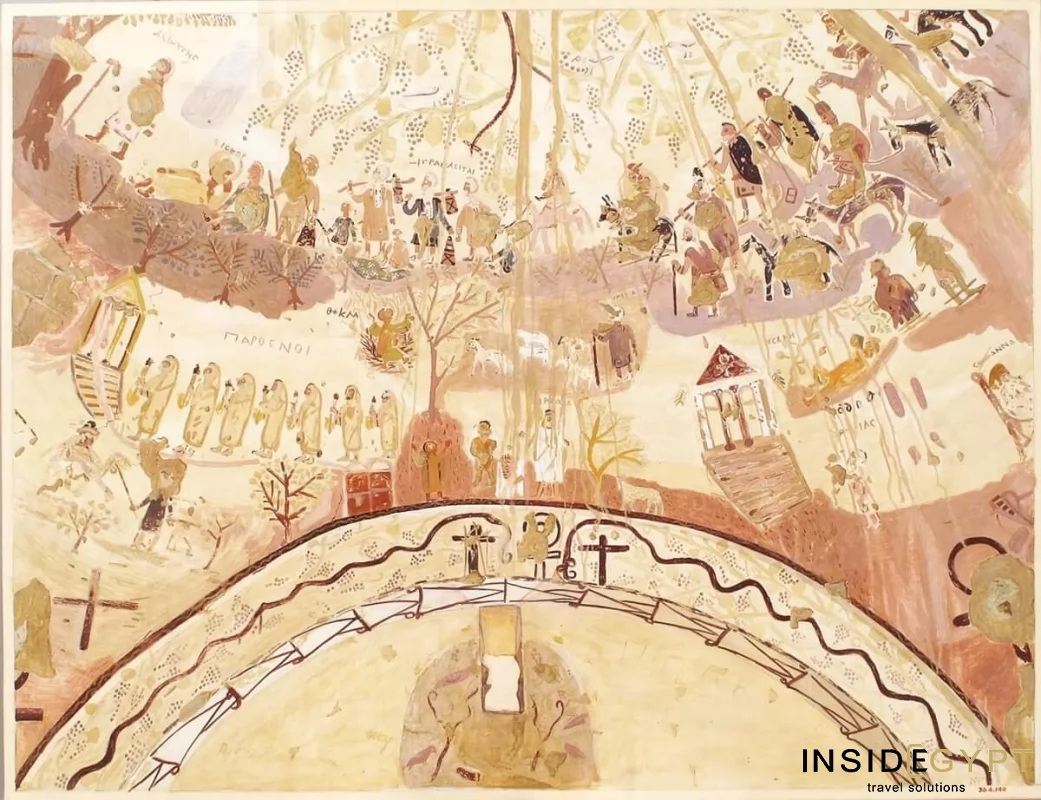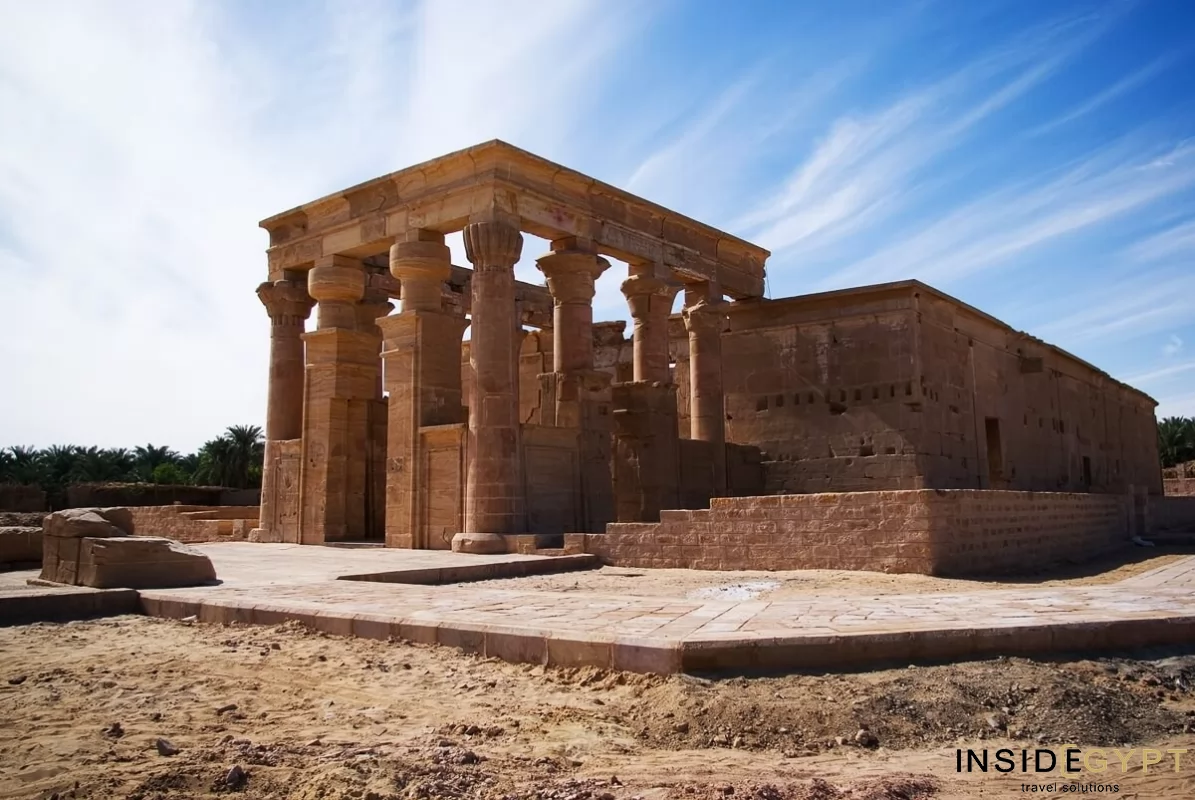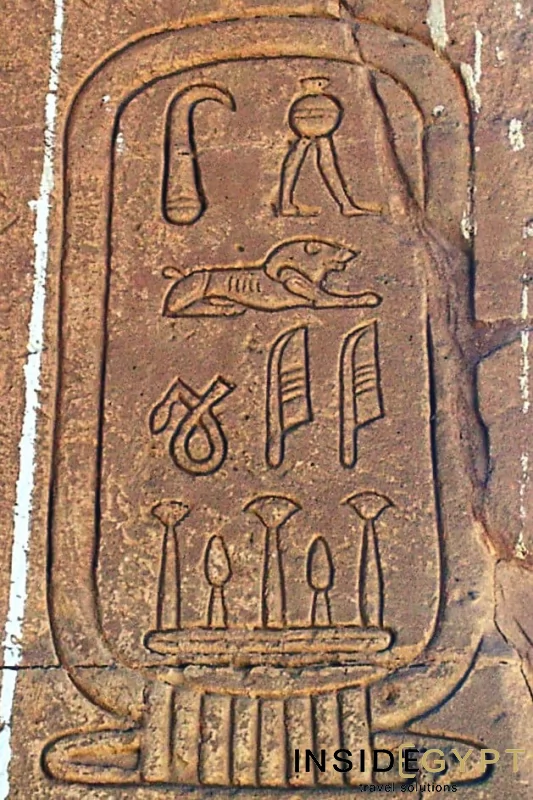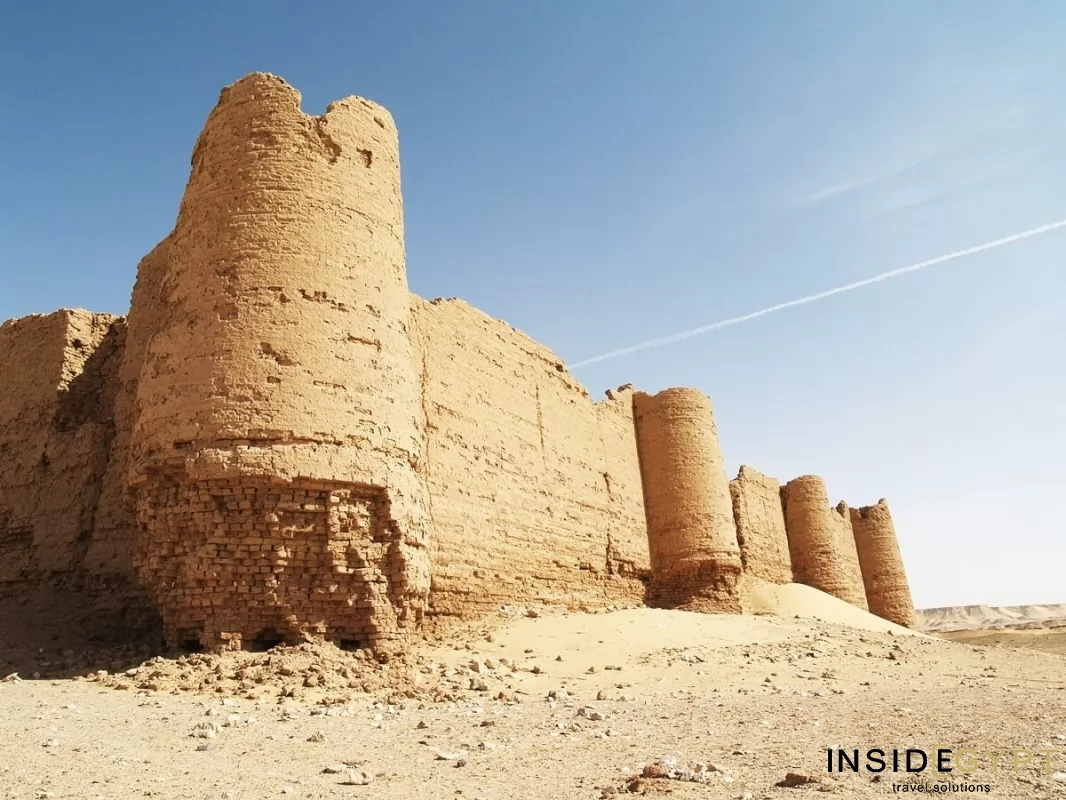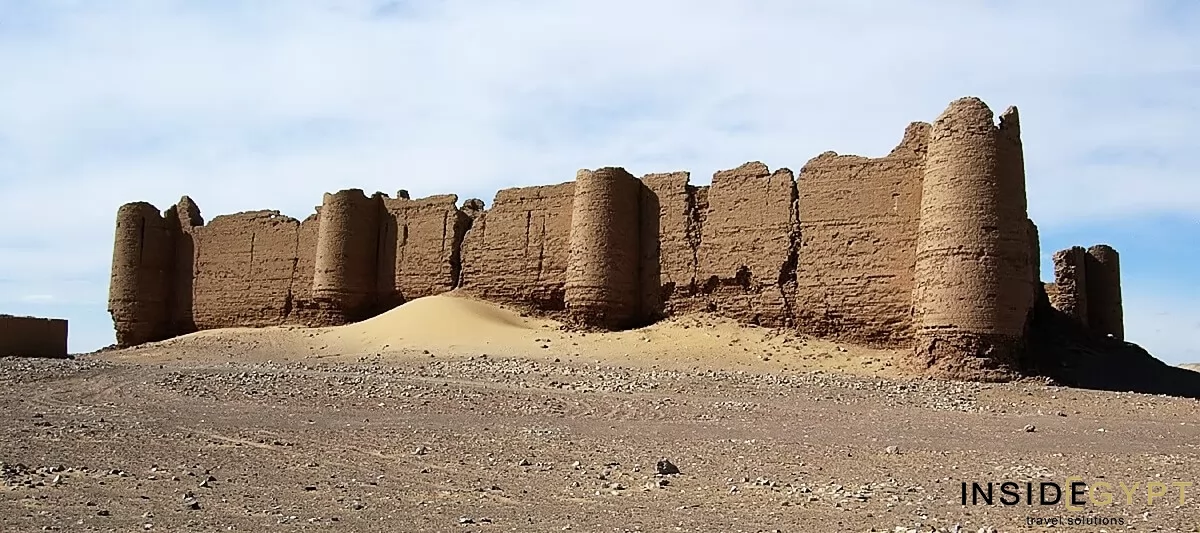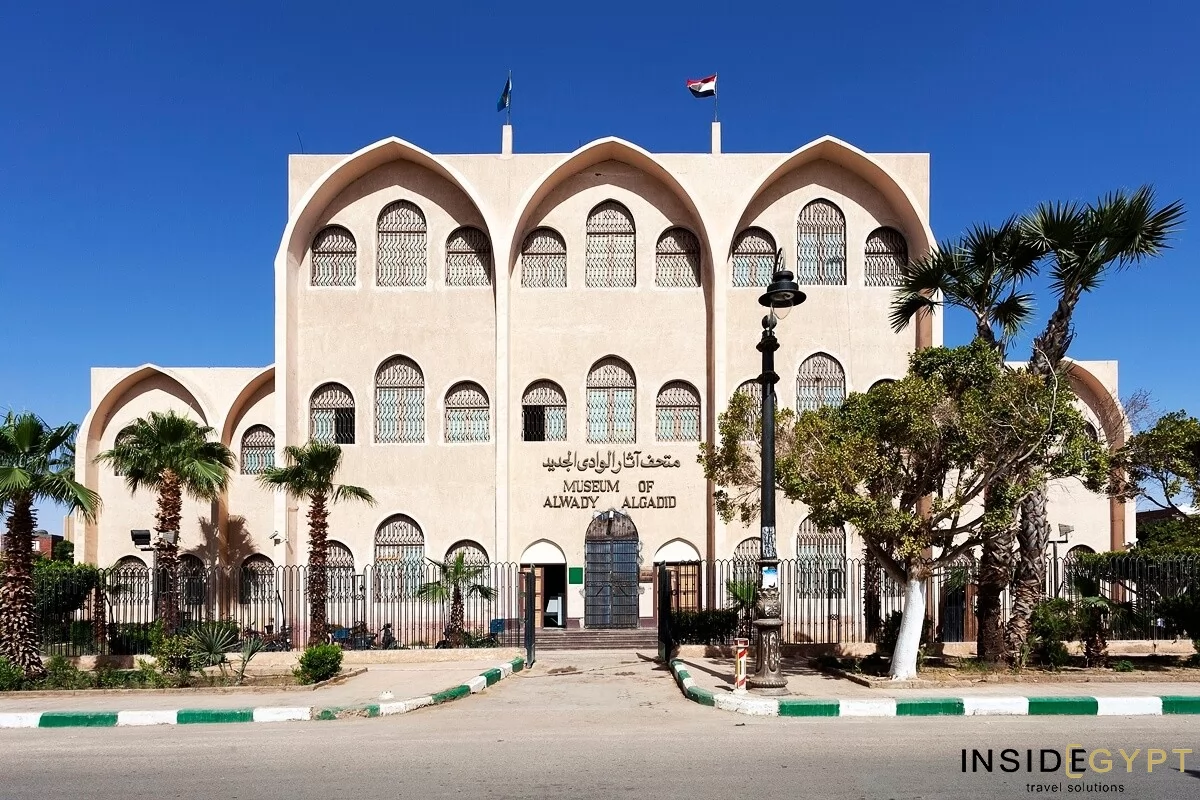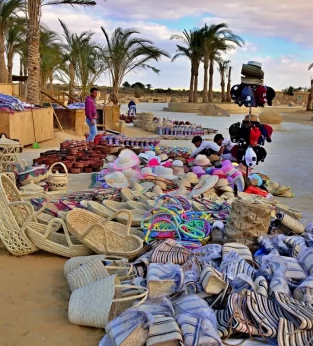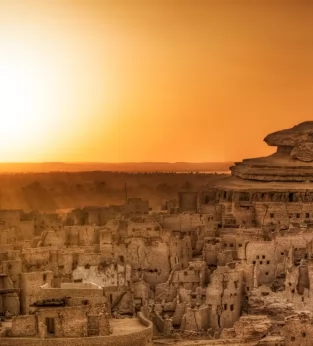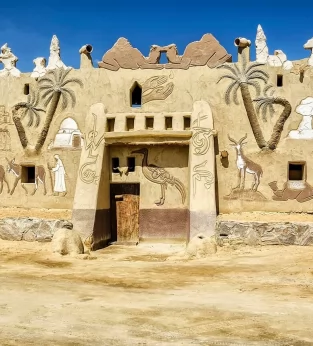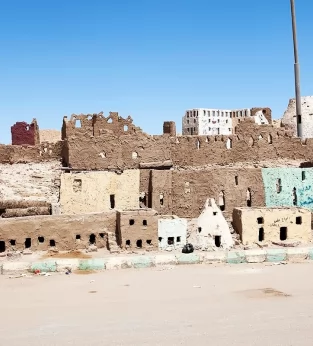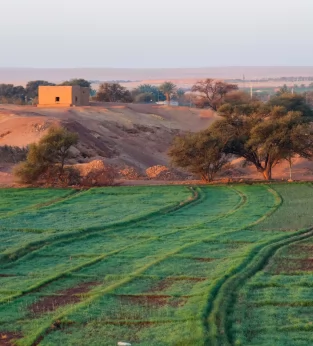Stay updated!
In the largest oasis of the Western Desert, the monumental Roman fortresses and the impressive collection of the New Valley Museum will attract your attention. A visit to the vast, Christian cemetery in Bagawat, that reaches to the horizon, is also a must.
Unofficially, the city of Kharga oasis is named the Great Oasis. It stretches from north to south for 160 km, while its width is between 20 to 80 km. Kharga's lands were once hidden beneath the lake's surface. When it dried up, a thick layer of sticky fertile silt was left behind. Even today, agriculture is the primary source of income for the local population, and the main exports are dates, grains and vegetables. Kharga is also famous for baskets and mats that are hand-woven from leaves and palm fibers.
Over 60,000 people live in the oasis, and this number is constantly growing. About 1,000 people in the oasis community are Nubians who were displaced to Kharga from the areas of Nubia flooded by Lake Nasser.
The oasis was treated as a colony for criminals and people who were deemed as inconvenient to royal power from the early days of the state. Even early Christian bishops were sent here for preaching views contrary to Church doctrine. Many of them continued their preaching, making Kharga the mainstay of Christianity in Islamic Egypt. The monks founded churches and cemeteries. Bagawat necropolis is considered to be one of the oldest and best preserved in the world.
A characteristic element of the landscape in Kharga are forts from the Roman times (3rd-4th century BC), scattered throughout the area. They were built to ensure the safety of the oasis and the caravans stationed in it, and they guarded the most important trade route, leading from Asyut to Sudan - the "Forty Days Road".
Temple of Hibis
In antiquity, the Hibis Temple stood between numerous villas and outbuildings in the then oasis capital - Hebet. Today it is surrounded only by date palms, and there is hardly anything remaining of the town buildings. The temple is the best-preserved building in Egypt from the Persian period (6th-5th century BC). It was built of local limestone. It was dedicated to the so-called Theban triad: Amun-Ra, his wife Mut, and his son Khonsu.
The entrance to the temple is guarded by a monumental sandstone gate. Its walls served in ancient times as a kind of notice board - many decrees and resolutions were written on them. In front of the entrance to the temple itself, there are eight columns with composite capitals - in the past, the pillars formed a roofed colonnade. After entering the temple, we go through the columned room, which consists of 12 columns with capitals in the shape of a bundle of palm leaves. This room leads straight to a narrow courtyard. Here you will find four columns, and their capitals are in the shape of a bundle of papyrus.
The entrance to the most important room of the temple - the sanctuary, is preceded by a sacrifice hall. The sanctuary itself consists of the chapel of the deceased deified king and a section dedicated to the Theban triad.
Rich temple decorations are visible in the sanctuary. They are a combination of religious scenes and theological texts. One of the reliefs depicts the winged figure of the god of the desert and oasis, Seth, with the head of a falcon (the sacred animal of Horus, patron saint of royal power). Set's body is painted blue. This color is usually attributed to the deities of the air. God is shown fighting with snake Apop, who disturbs the Sun from its daily journey through the sky.
The sun's rays illuminate the inside of the the sanctuary (Holy of Holies) of the ancient Temple of Hibis on September 6 and April 7 annually.
Bagawat
Bagawat necropolis, at the foot of Gebel El Teir is considered to be one of the oldest Christian cemeteries in the world. Most of the graves remain in excellent condition. The necropolis is made up of mausoleums built mainly of mud brick and underground galleries that date back to the 4th century. The large area of the entire complex indicates that it was used for centuries - up to the 11th century.
The style of each of the 263 graves depended on the financial status of the person to be buried in it, as well as the prevailing fashion. There are both tombs with simple architecture, consisting of one room, and extensive mausoleums with richly decorated facades, columns, arches and domes. Narrow, winding streets run between the graves, and it's easy to get lost in the tangle of the streets.
Two tombs with chapels, whose domed vaults are decorated with impressive frescoes, deserve special attention. The first is the Chapel of Exit. It features a scene of the exodus of the Jews from Egypt under the leadership of Moses. The frescoes in the second chapel - the Peace - depict the Annunciation of the Virgin Mary and scenes from the Old Testament. You can recognize Adam and Eve, Noah's Ark, and also Daniel in the lion's den. The internal walls of the chapels are covered with both frescoes (there are bunches of grapes and pigeons, among others), as well as Greek inscriptions.
Qasr El Labeka
Visible from afar, the Qasr El Labeka fortress is one of twenty such fortresses in the Kharga oasis. It was built as the seat of the Roman garrison that guarded the caravan trade routes (3rd and 4th centuries). This is distinguished from other fortresses by its location away from urban centers, well-preserved walls up to 12 m high and circular defense towers. After entering the fort area through the eastern gate, you can see mainly the ruins of brick buildings. There is a picturesque corner a dozen or so meters south of the fortress. Here you can relax in the shade of palm trees, acacia and tamarisk trees. There are also ruins of a well that was built on the site of an ancient spring. North of the fort you will find the remains of a mud-brick temple (3rd century). The few surviving reliefs inside the building show the figure of a vulture. It is probably a symbolic representation of the goddess Mut (Amun's wife), whose cult animal was this bird.
Numerous necropolises have been found in the vicinity of Qasr El Labeka, with over 500 mummies in total. Burial equipment was found on the bodies of important officials and dignitaries, including gilded death masks and jewelry made of bronze, glass and semi-precious stones (part of the collection is available at the New Valley Museum in Kharga).
A visit to the New Valley Museum in Kharga is a perfect finale to a trip to the Kharga oasis.
Go on...visit Egypt! Book your Egypt group tour!
